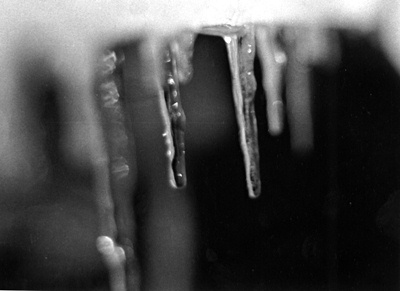All Nonfiction
- Bullying
- Books
- Academic
- Author Interviews
- Celebrity interviews
- College Articles
- College Essays
- Educator of the Year
- Heroes
- Interviews
- Memoir
- Personal Experience
- Sports
- Travel & Culture
All Opinions
- Bullying
- Current Events / Politics
- Discrimination
- Drugs / Alcohol / Smoking
- Entertainment / Celebrities
- Environment
- Love / Relationships
- Movies / Music / TV
- Pop Culture / Trends
- School / College
- Social Issues / Civics
- Spirituality / Religion
- Sports / Hobbies
All Hot Topics
- Bullying
- Community Service
- Environment
- Health
- Letters to the Editor
- Pride & Prejudice
- What Matters
- Back
Summer Guide
- Program Links
- Program Reviews
- Back
College Guide
- College Links
- College Reviews
- College Essays
- College Articles
- Back
Shine a Light: Alfred Hitchcock’s Usage of Lighting in Film
Seemingly innocuous details often make a significant difference in film. A cinematic technique such as lighting may not be the most immediately noticeable aspect of a sequence of film, but it can play an integral role in enhancing a movie’s overall imagery. One director who took full advantage of this technique was Alfred Hitchcock. Throughout his career, he paid full attention to lighting details and ensured that each shot carried significant creative weight.
In the bank robbing sequence from “Marnie,” the lighting and shadows add to the emotional tension of the scene. Before the robbery, Marnie hides in a bathroom stall to wait for the building to empty out. Her head is positioned in the bottom right corner of the lengthy shot, the most vulnerable area of the screen, conveying both the risk involved with her plan and the notion that anything could go wrong at any particular moment. Marine’s face is also partially in the shadows, representing the shady nature of her character and serving to keep her hidden more completely. Hitchcock uses other elements, such as sound, to enhance the sequence. As Marnie listens to see if everyone has finally left, the audience finds themselves listening to see if they, too, feel that it is safe for Marnie to leave the stall. Accompanying this sound is the shadow of the bathroom door opening and closing, which is visible against the wall in the upper left hand corner. This is an interesting yet uncertain way of showing people filing out of the bathroom and, subsequently, the building. The audience is emotionally engaged throughout the scene, which is an achievement considering how uninteresting a shot of a woman’s face could be.
The lighting in the film “Strangers on a Train” symbolically indicates the true nature of the characters. During the opening scene where Bruno and Guy are talking on the train, Bruno sits so that the shadow of the compartment’s venetian blinds hits his face directly. The shadows are horizontal and resemble the bars of a jail cell. In contrast, no shadows darken Guy’s face. Even before ten minutes of the film have passed, the lighting sends a subliminal message that Bruno’s character is the one who is not meant to be trusted. Later on in the film, once Bruno has killed Guy’s wife, another display of symbolic shadows can be observed. Bruno stands across the street from Guy’s house, far enough into the shadows so that his face is not visible. He calls Guy over to tell him the news, and Guy leaves the entrance of his brightly lit apartment to speak with Bruno. Guy stands in the light while they speak to separate himself from Bruno’s plan, but once the police arrive at Guy’s house to inform him of the murder, Guy also hides in the shadows with Bruno.. Guy was aware of Bruno’s plan, and his move into the shadows symbolizes this awareness. Once Guy decides he wants nothing to do with Bruno, he storms out of the shadows and back into his home, representing his decision to oppose Bruno for the remainder of the movie.
In “Vertigo,” however, Hitchcock reaches the symbolic apex of film lighting. Throughout the movie, the color green symbolizes mystery. When Johnny initially pursued Madeline by car, she drove a green car representing the mysterious circumstances surrounding her situation and identity. Even after Madeline has seemingly committed suicide, Johnny first sports Judy wearing a green dress, indicating that Judy herself may be an extension of the film’s mystery. In Judy’s hotel room, however, the lighting takes on the main responsibilities of the enigmatic green motif. A green light from one of the neon signs on the street shines into Judy’s room, casting an eerie green glow. Hitchcock uses this green light in a few significant ways apart from straight-ahead lighting. When Judy first appears dressed similar to Madeline, the green light makes her appear to be glowing. She comes across Johnny as an apparition of Madeline, but viewers know that the green color indicates the secrets of her identity. The green light also highlights Judy’s silhouette, further reinforcing her status as Madeline reincarnated in Johnny’s eyes. In truth, Judy was impersonating Madeline, but Johnny was oblivious of this fact. The usage of green lighting intensifies Johnny’s fascination with the uncanny similarities between Madeline and Judy.
Not many would immediately point to lighting as an integral medium of expressing a film’s themes, but Hitchcock brought this technique to the foreground. It is a powerful way of conveying mood, but Hitchcock understood its less obvious extensions, which made his work more powerful. The depth of the less noticeable made Hitchcock films masterpieces, securing them a permanent spot in the history of film.

Similar Articles
JOIN THE DISCUSSION
This article has 0 comments.
